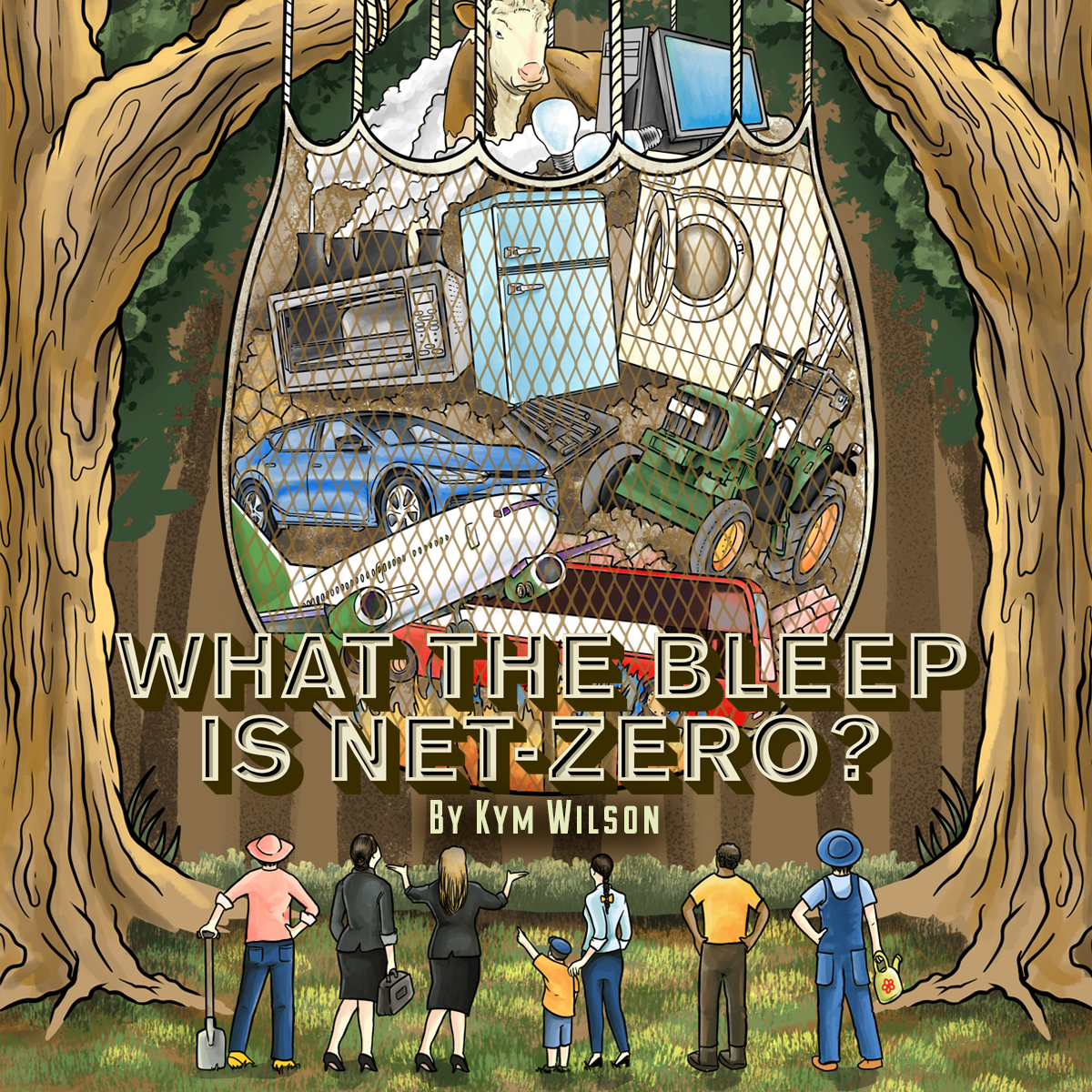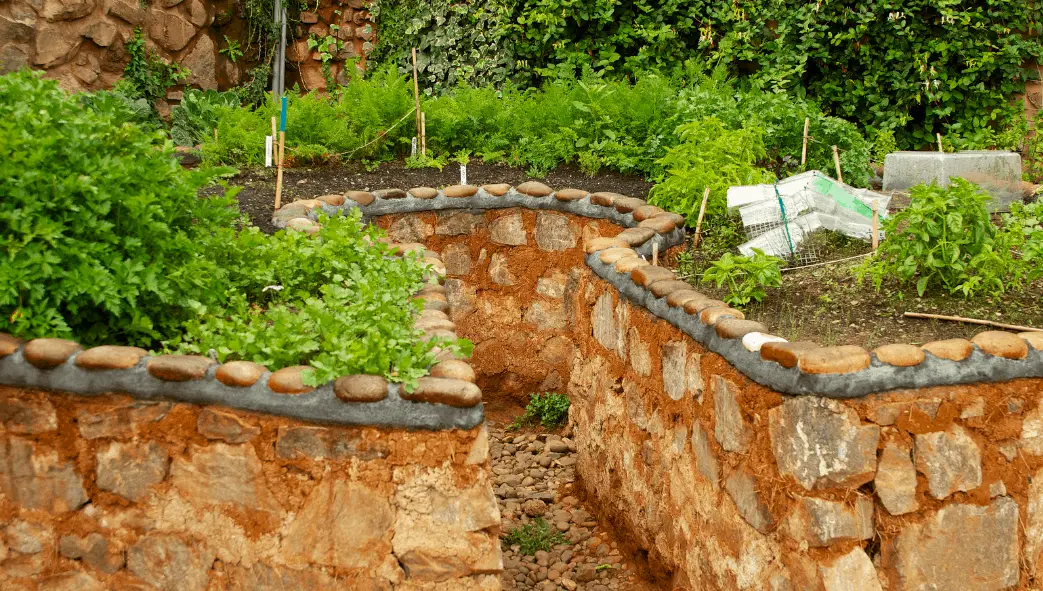This article first appeared on the National Regenerative Agriculture Day Website www.nrad.org.au and was commissioned by Carbon8.org.au – It is reproduced here with their permission.
By Kym Wilson
There are many articles to be found all over the internet about Net Zero, but what really is Net Zero, and is it enough? Net Zero according to the multitude of sources available is quite simply the term given to the balancing of the scales in terms of Greenhouse Gas Emissions. Some explain it in terms of a set of scales with emissions on one side and sequestration/reductions on the other. Still, other sources describe Net Zero as the removal of GHG from the atmosphere accompanied by reductions in emissions so that the Net effect is zero.
There are many other terms also bandied about such as Hard Zero, Climate Neutral, Climate Positive, Paris Aligned, and more. Is it any wonder we as ordinary citizens are confused and bewildered by it all? In researching this article, I read many sites, including Intergovernmental Panel on Climate Change (IPCC) latest report, the Australian Governments Long Term Emissions Reduction Plan (the Plan), and COP26 Presidency Outcomes – The Climate Pact, and many others. What became clear amongst all the jargon is one thing. There does not seem to be the agreement that we are led to believe from world governments about how and when to move forward only that we should. Some governments are targeting 2030 while Australia amongst others is playing for the long game in 2050.
Australia was a latecomer to the COP26 in November 2021 held in Glasgow Scotland. Our Prime Minister held out until the last minute to make the announcement that he would attend the summit. This announcement was timed very much alongside the release of the Plan previously mentioned along with the need to gain agreement from its coalition partner The National Party about the language that would be acceptable in considering agreements to any negotiations at COP26. None of this is new information to most Australians.
According to The Climate Pact of COP26, the main outcomes are as follows: Halting and Reversing Deforestation – Under this agreement, Australia among the 141 signatories has agreed to not only conserve but accelerate the restoration of global forests and other terrestrial ecosystems. This includes not allowing extractive industry or any industry for that matter to contribute to land degradation or deforestation while building resilience and capacity in sustainable agricultural systems. This goal specifically mentions rural communities and indigenous peoples as land managers integral in redesigning agricultural policies and programs to incentivise sustainable agriculture, promote food security, and benefit the environment. It also calls upon governments everywhere to ensure robust policies and systems are in place to accelerate the transition to an economy that is resilient and advances forest, sustainable land use, biodiversity, and climate goals. Of the 141 signatories – 139 agreed this must occur by 2030 to protect biodiversity and accelerate the use of trees in the solution for GHG drawdown. It was also the very first outcome to be ratified.
“This was a truly historic COP on the vitally important issues of forests, land use, agriculture, the ocean, and nature. It’s now time to move from commitments to action. “Ani Dasgupta, President & CEO, World Resource. Disappointingly, Australia failed to join the International Zero Emissions Vehicle Alliance which has the goal of 2040 (some countries as early as 2030) for all new car and van sales to be zero emissions. There is also no information regarding Australia’s commitment to reducing methane emissions, but one can assume by the lack of this information that Australia did not sign on for this as it expressly targets the coal industry. Likewise in the Plan (Australia’s Roadmap to Long Term Emissions Reduction), the coal industry features heavily as does Natural Gas and extractive mining. Our government prefers to look to technology to find ways to clean up the emissions of these industries in particular.
In fact, within this plan, our government has identified Carbon Capture and Storage as a major contributor to the reduction in greenhouse gases as a result of industry. This on the face of things sounds like a great idea but on further investigation, I found that the government coupled with industry is planning to pump carbon and other emissions into the ground to be held in large basins in some of the most prime agricultural lands in the country. Hang on a sec! What! Yep, you read that correctly.
The Surat Basin along with several others has been identified for this plan while the Barrow Island area off the coast of Western Australia already houses the world’s largest Carbon Capture and Storage Projects backed by the likes of Exxon, Shell, Chevron, and the West Australian Government. What is more distressing about this project and many like it – is that more than 80% failed or failed to launch at all. The Gorgon Project is no different having failed to meet its own targets by 70% in the 5 years it has been running. They in fact are sequestering (burying) only about 30% of their total emissions and releasing an estimated 10 million tonnes of CO2 into the atmosphere each year. (ABC News Science 6/11/21).
Barrow Island might not be familiar to you but Birdlife International is sure of its significance. They have listed it as an important bird area. It is also well known for its important and rare mammal species including several of which are extinct or endangered elsewhere. Limestone caves provide important breeding grounds for rare sea turtles, while the island is also home to 43 rare reptiles. But don’t worry because the Gorgan Project is offshore and couldn’t possibly affect these important florae and fauna. Barrow Island is also the largest and longest-running oil and gas field in Australia and has been in operation since 1964 with undersea pipelines that freighters use to fill their ships for export of this valuable resource.
The Australian Government has identified 4 other key sites for this underground waste to be pumped into. One must ask the question what will this do to our oceans, coastlines, and soils. While the major GHG here is C02 – other gases including methane are also involved. Of note are several scientific works regarding the security of GHG stored in this fashion and the likelihood of leakage, some sources stating this to be the biggest barrier to Carbon Capture and Storage solutions. We note that long-term behaviour and knock-on effects of CO2 in our soils and oceans subsurface remains a key sticking point and vastly under-researched. However, Australia and its major partners are keen to utilise this process as an emissions reduction strategy. Read that again – Emissions Reduction Strategy.
Australia already claims to have reduced emissions by 20% on 2005 levels. While the Gratton Institute states based on the research of IPCC and others that the real target for emissions reduction should not be based on a point in time such as was done in The Paris Agreement 2015 but rather is limiting cumulative emissions to stay within a carbon budget. Further, James Ha has detailed Australia’s GHG emissions budget based on what was agreed in the COP21 and shows that Australia has consumed or rather emitted more than 42% of the total budget in terms of GHG emissions in the period 2013 – 2021. Meaning our emissions on current projections are set to exceed the budget by more than 50% by 2050 based on the strategies set out in the Plan.
Australia accounts for 1.3% of global emissions with only 0.3% of the global population, meaning Australia is among the biggest polluters on the planet.
So, it would seem that for all intents and purposes Net Zero is nothing more than begging Peter to pay Paul. Somewhat of an accountant’s balance sheet if you like. In the opening sentence of this article, I posed the question, What is Net Zero and Is it Enough? It would seem that while Governments around the globe struggle to find ways to keep their economies to scale and ticking along, they are also aware that citizens of the world want more from them when it comes to our growing emissions. Targets are simply not enough; we want and need action. For my part, and after reading the many documents referred to in this article and more, I see Net Zero as better than doing nothing but not much. Certainly, the Australian Government seems to be planning on business-as-usual despite being a signatory to The Paris Agreement, The Kyoto Protocol, and now COP26. Finally dear reader, I must make mention of some work done by Professor Tom Crowther of Swiss University Zurich. In his work, he analysed the effect of tree planting on a grand scale but not in areas where horticulture and agriculture are the main industry. His findings are startling and I will leave you with a direct quote. “This new quantitative evaluation shows [forest] restoration isn’t just one of our climate change solutions, it is overwhelmingly the top one,” said Prof Tom Crowther at the Swiss university ETH Zürich, who led the research. “What blows my mind is the scale. I thought restoration would be in the top 10, but it is overwhelmingly more powerful than all of the other climate change solutions proposed.” Prof. Tom Crowther, The Guardian 2019.
This article has been written for Carbon8. A Regenerative Agriculture Charity.
References and Further Reading
https://netzeroclimate.org/what-is-net-zero/
https://www.climatecouncil.org.au/…/what-does-ipcc…/
https://www.climatecouncil.org.au/…/ipcc-sixth…/
https://www.climatecouncil.org.au/…/cop26-ends-with…/https://www.minister.industry.gov.au/…/australia…
https://ukcop26.org/…/COP26-Presidency-Outcomes-The…
https://ukcop26.org/cop26-goals/mitigation/
https://ukcop26.org/cop26-goals/
https://www.industry.gov.au/…/australias-long-term…
https://www.abc.net.au/…/carbon-capture…/100585034https://iopscience.iop.org/article/10.1088/1748-9326/abd19ehttps://en.wikipedia.org/…/Barrow_Island_(Western…
https://grattan.edu.au/…/three-charts-on-why-net-zero…/


